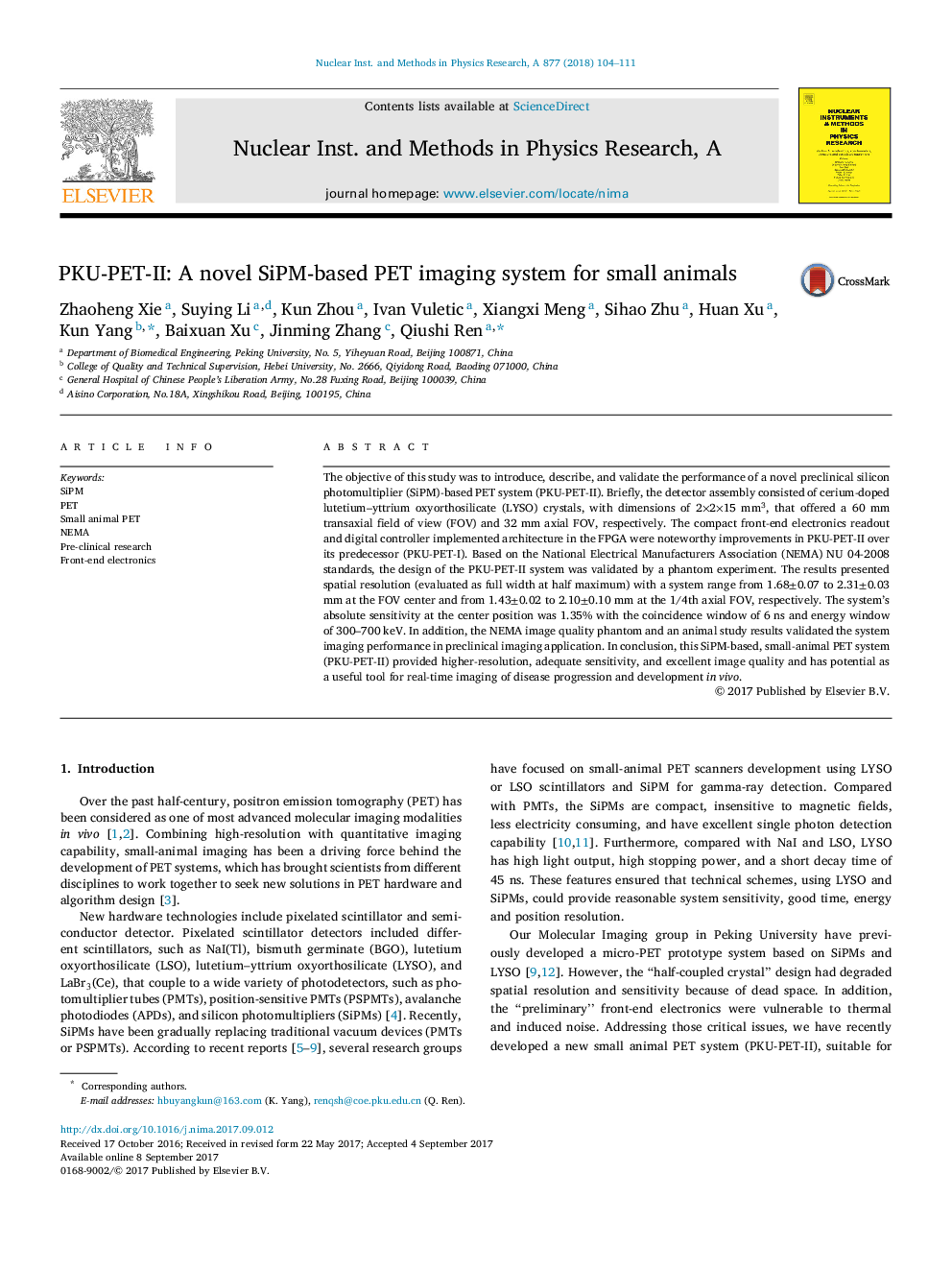| Article ID | Journal | Published Year | Pages | File Type |
|---|---|---|---|---|
| 5492522 | Nuclear Instruments and Methods in Physics Research Section A: Accelerators, Spectrometers, Detectors and Associated Equipment | 2018 | 8 Pages |
Abstract
The objective of this study was to introduce, describe, and validate the performance of a novel preclinical silicon photomultiplier (SiPM)-based PET system (PKU-PET-II). Briefly, the detector assembly consisted of cerium-doped lutetium-yttrium oxyorthosilicate (LYSO) crystals, with dimensions of 2Ã2Ã15 mm3, that offered a 60 mm transaxial field of view (FOV) and 32 mm axial FOV, respectively. The compact front-end electronics readout and digital controller implemented architecture in the FPGA were noteworthy improvements in PKU-PET-II over its predecessor (PKU-PET-I). Based on the National Electrical Manufacturers Association (NEMA) NU 04-2008 standards, the design of the PKU-PET-II system was validated by a phantom experiment. The results presented spatial resolution (evaluated as full width at half maximum) with a system range from 1.68±0.07 to 2.31±0.03 mm at the FOV center and from 1.43±0.02 to 2.10±0.10 mm at the 1/4th axial FOV, respectively. The system's absolute sensitivity at the center position was 1.35% with the coincidence window of 6 ns and energy window of 300-700 keV. In addition, the NEMA image quality phantom and an animal study results validated the system imaging performance in preclinical imaging application. In conclusion, this SiPM-based, small-animal PET system (PKU-PET-II) provided higher-resolution, adequate sensitivity, and excellent image quality and has potential as a useful tool for real-time imaging of disease progression and development in vivo.
Related Topics
Physical Sciences and Engineering
Physics and Astronomy
Instrumentation
Authors
Zhaoheng Xie, Suying Li, Kun Zhou, Ivan Vuletic, Xiangxi Meng, Sihao Zhu, Huan Xu, Kun Yang, Baixuan Xu, Jinming Zhang, Qiushi Ren,
